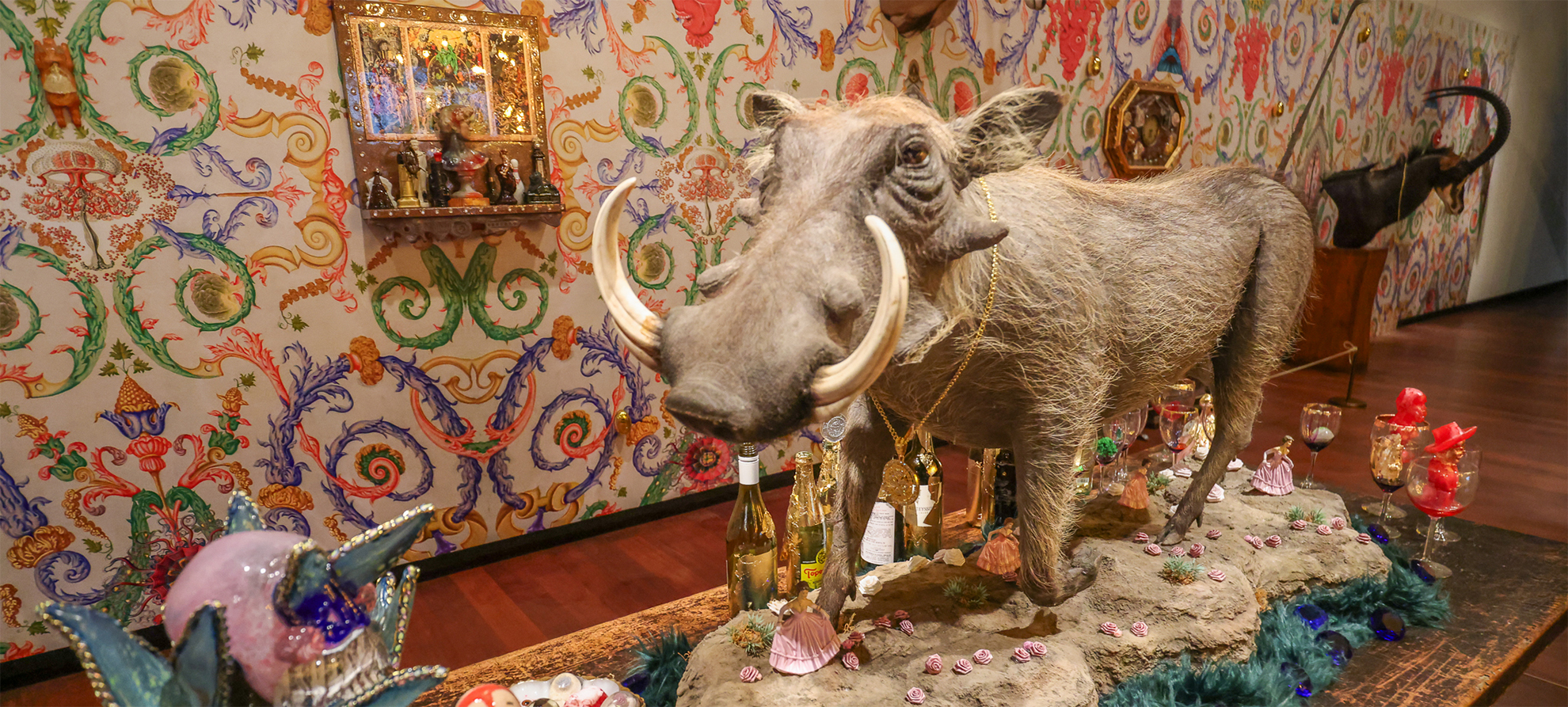Though they began their careers as artists independently, glass blowing brought them together and taught brothers Einar and Jamex de la Torre how to collaborate.
This summer Texans can take a journey into some strange and beautiful glass worlds created by Einar and Jamex as San Antonio’s McNay Art Museum presents the new exhibition de la Torre Brothers: Upward Mobility, on view until Sept. 15, 2024.
Upward Mobility is divided into four galleries filled with glass sculpture, lenticular prints, video, and large scale mixed-media installations. While not necessarily a full survey of the brothers’ acclaimed career, the exhibition offers a unique blending of brand new and signature work from the past 20 years. The show also joins a separate site-specific commission for the museum’s AT&T Lobby that was installed several months previously. Titled Latin Exoskeleton, the installation covers the entrance desk and lobby walls with trompe l’oeil wallpaper and prints.
“I think there’s a common thread in all four rooms about our relationship to nature and to consumption, which of course is of nature and its resources,” explains Einar de la Torre.
With the lobby acting as a kind of “teaser,” according to Barilleaux, the first gallery might lure viewers into thinking this will be a traditional exhibition with sculptures on pedestals and glass art on wall, albeit an exhibition filled with startling color and juxtapositions of ancient and mythological iconography and pop culture images.
Heading into the second gallery puts any ideas of a staid exhibition to rest, as museum-goers will find themselves entering into a decadent and disturbing immersive banquet hall. Titled “Le Point de Bascule” (the Tipping Point), the gallery is filled with mounted animals, fur coats, glass heads, human arm chandeliers and splashes of blood-red color everywhere.
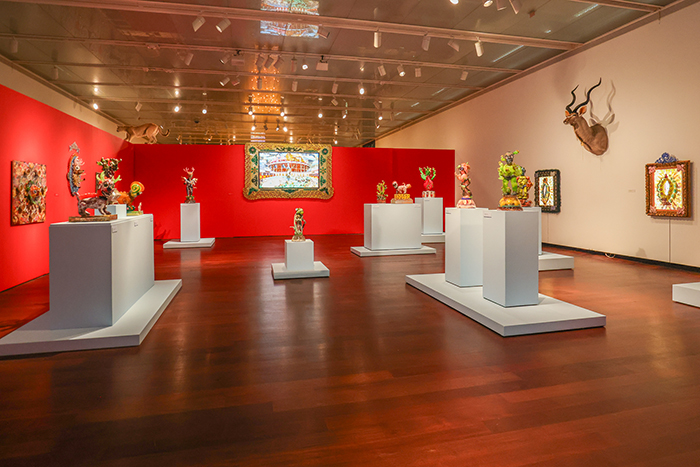
1 ⁄7
Installation images, De la Torre: Upward Mobility at the McNay Art Museum, Tobin Exhibition Galleries, on view March 1, 2024 – Sept 15, 2024.
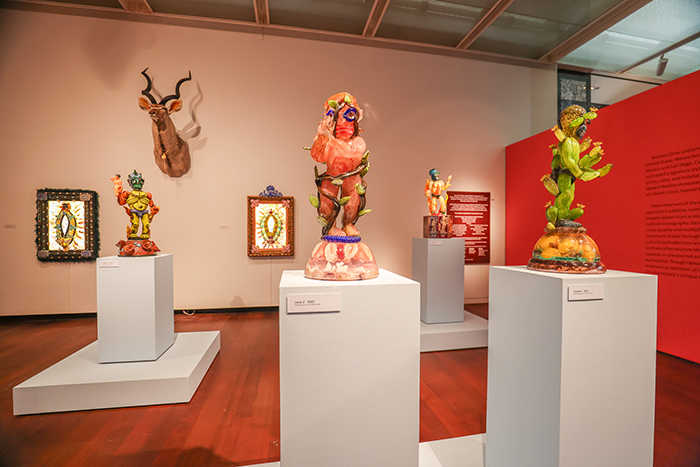
2 ⁄7
Installation images, De la Torre: Upward Mobility at the McNay Art Museum, Tobin Exhibition Galleries, on view March 1, 2024 – Sept 15, 2024.

3⁄ 7
Installation images, De la Torre: Upward Mobility at the McNay Art Museum, Tobin Exhibition Galleries, on view March 1, 2024 – Sept 15, 2024.
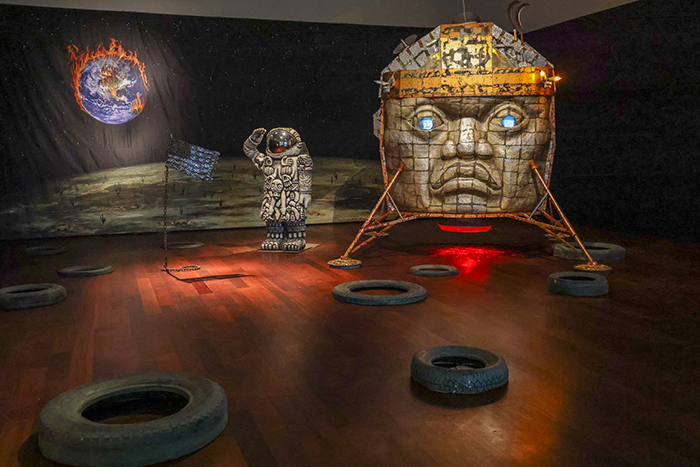
4 ⁄7
Installation images, De la Torre: Upward Mobility at the McNay Art Museum, Tobin Exhibition Galleries, on view March 1, 2024 – Sept 15, 2024.
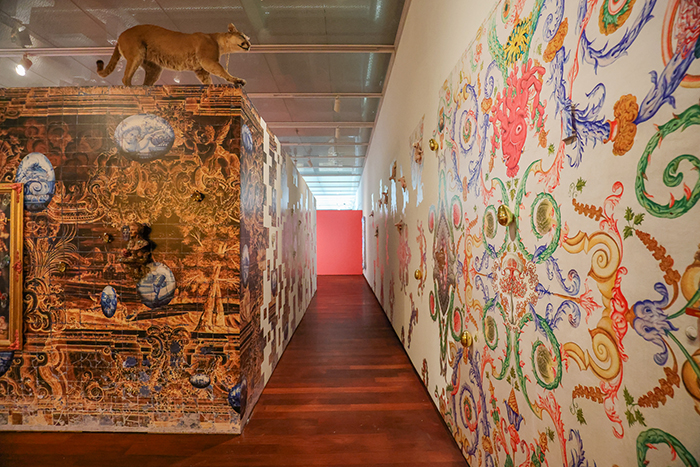
5 ⁄7
Installation images, De la Torre: Upward Mobility at the McNay Art Museum, Tobin Exhibition Galleries, on view March 1, 2024 – Sept 15, 2024.
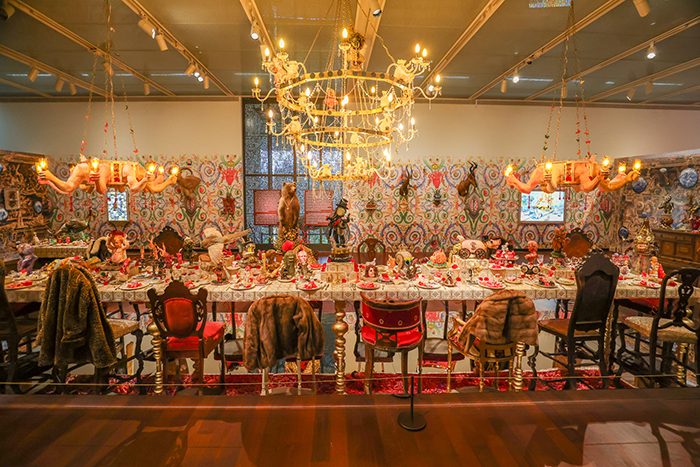
6 ⁄7
Installation images, De la Torre: Upward Mobility at the McNay Art Museum, Tobin Exhibition Galleries, on view March 1, 2024 – Sept 15, 2024.
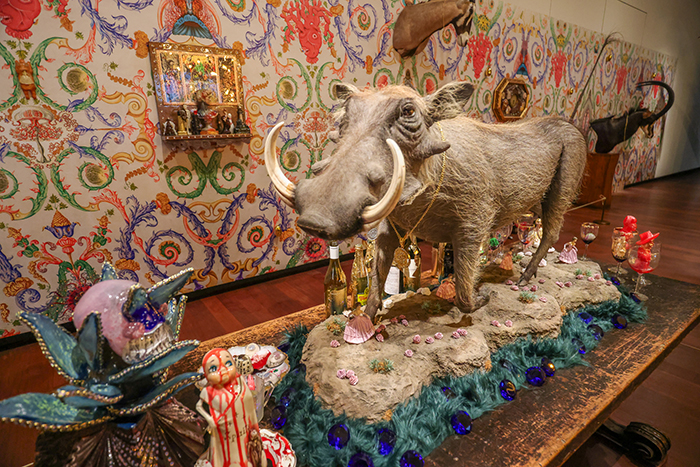
7 ⁄7
Installation images, De la Torre: Upward Mobility at the McNay Art Museum, Tobin Exhibition Galleries, on view March 1, 2024 – Sept 15, 2024.
The third gallery features large-scale lenticular prints that tell their own 3D stories of hybrid mythical monsters destroying ancient and modern cities, as well as a giant floor projection of an animated view of México City in real time. Jamex describes these prints as illustrating the showdown between technology and nature.
The final gallery showcases their famous large-scale installation “Colonial Atmosphere” depicting an Olmec head-shaped lunar module landing on a tire-strewn moon with an image of the Earth burning in the background.
“We didn’t completely mean it to be that way, but you can almost see a linear story going from chapter to chapter,” says Jamex de la Torre of these thematic portraits of humans manipulating and sometimes destroying nature. Yet much of the work is laced with dark comedy.
“Maybe we should worry about not ruining this Earth,” notes Einar, with humor, but then adds that they don’t want to make art that preaches, acknowledging that they too travel on planes and use technology with the rest of us.
“We’re careful not to exclude ourselves and try to come up with some sort of an ivory tower. We’re not saying that we have answers, but I think art can be about helping with the questions so that we can reflect on our own actions.”
That dark humor in their art aids in critiquing without necessarily preaching. “Humor is also necessary for coping with the realities of a human condition,” says Jamex. “It’s important to make light of things and not tread so heavy mentally because we’re limited. We have to have humility in how we take it all in. You have to laugh sometimes.”
—TARRA GAINES

